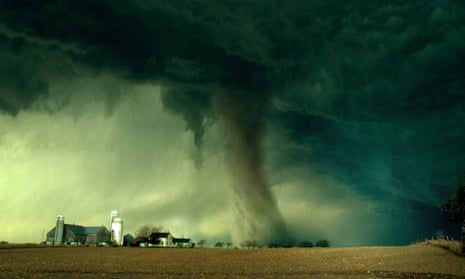Agriculture is a main source of income for rural communities in many developing countries. More than 2 billion people depend on smallholder farms for their livelihoods, so improving conditions for smallholders would reduce global poverty levels.
Life for rural smallholder farmers is often marred by difficulties, and there are many constraints limiting their economic potential. Challenges include uncertain weather conditions affecting harvests, insecure land ownership limiting farmers’ propensity to invest, restricted access to capital and farm inputs such as fertiliser or seeds, unfavourable trade policies and price fluctuations.
Many of these constraints are beyond the farmers control as they depend on environmental conditions, policies or market players. For example, a female farmer in a traditional rural community is unlikely to own the land she works on. She will have no collateral and, as market prices and demand are volatile and her activity is heavily exposed to natural calamities, creditors could consider her business too risky to invest in. Banks are also unlikely to lend to farmers in disaster-prone regions if the shocks might result in widespread loan defaults.
Agricultural insurance has the potential to address some of these constraints by facilitating access to means of production and changing behaviour by reducing uncertainty. Coverage can enable farmers to invest in riskier but potentially more lucrative farm activities. Timely insurance pay-outs after crop losses can help smallholders smooth consumption and prevent the sale of assets. Insurance can also be a catalyser, as lenders will be more likely to extend credit to farmers covered by insurance, allowing them to make productivity-enhancing investments.
Evidence from pilot studies suggests insurance does have an impact on farmers’ behaviour. In India, farmers covered by rainfall insurance shifted investments towards cash crops, which are more sensitive to rainfall deficit but expect higher returns. In Ghana, farmers with rainfall insurance increased their cash investments, cultivation area and labour inputs. The ultimate effect of insurance on the total value of farm outputs remains less evident though.
The real challenge now is to bring such schemes to scale so as to become sustainable. Many of the past programmes have not expanded beyond pilot testing and the next few years will really show how successful agriculture micro-insurance will be as a sustainable risk management solution.
Demand is still low as many smallholder farmers underestimate the severity and frequency of risk, levels of consumer education are still limited, there is a lack of trust in insurance providers and there is an overreliance on traditional coping mechanisms such as selling assets or borrowing from relatives after a shock.
This low demand makes the provision of sustainable agricultural micro-insurance challenging particularly when offering insurance as a stand-alone. The success of most insurance projects lies in the combination of insurance with other services, such as loans, in-kind seed payouts and government programmes which improve soil conditions and infrastructure.
Because of the variety of constraints smallholders face, insurance will be more efficient when embedded in a comprehensive disaster risk management strategy. Some weather-based index products such as El Niño insurance in Peru use weather parameters such as rainfall to trigger payments even before an event so farmers can take preventative measures to protect their crops.
Crop insurance ultimately appeals most when offered alongside other services such as weather forecasts through text messages, and extension services such as price and other market information, which, coupled with basic agricultural advice such as optimal planting dates for crops, are considered highly valuable to smallholders. For example, HARITA/R4 Rural Resilience Initiative in Ethiopia emphasises all aspects of risk management from prevention to creating financial reserves to draw on in the event of future risks. If unable to pay the insurance premium in cash, farmers can instead engage in risk reducing labour, such as the construction of small water retention basins and afforestation.
The potential of agricultural insurance lies in contributing to the prevention and management of risks and modifying the behaviour of smallholders towards increased and more lucrative investments while facilitating their use of more financial services. The micro-insurance sector being relatively new, there are of course obstacles to be overcome to effectively reach remote communities, including small size of markets, lack of client familiarity with financial products, lack of necessary infrastructure and limited demand. Basis risk – where indices measured do not perfectly mirror the experienced loss – remains a key issue. From the consumer perspective, efforts need to be continued to promote financial literacy in order to address low demand, and insurance providers must continue to focus on creating products which are both valuable, sustainable and tailored to the context-specific needs of clients.
Gaby Ramm and Roland Steinmann are members of the Micro-insurance Network’s Agricultural Insurance Working Group. Follow @NetworkFlash on Twitter.
Read more stories like this:
Financial inclusion in emerging economies: the debate
Does microfinance really help poor people?
Funeral insurance in South Africa: counting the cost of life and death
Advertisement feature: Extending Credit to Burma’s Rural Poor
Join our community of development professionals and humanitarians. Follow @GuardianGDP on Twitter.

Comments (…)
Sign in or create your Guardian account to join the discussion